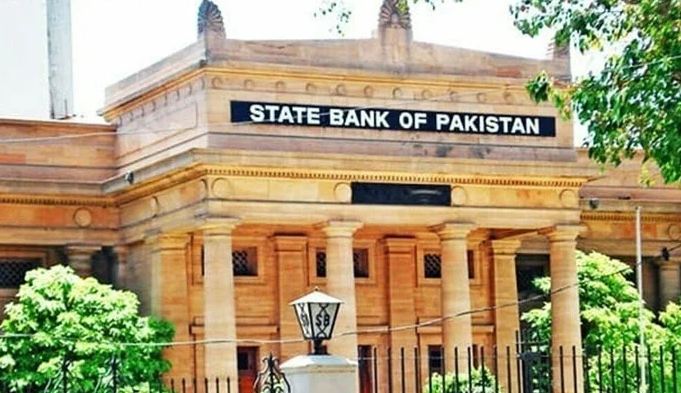ISLAMABAD, Apr 04 (DNA): State Bank of Pakistan (SBP) on Tuesday
increased the interest rate by 100 basis points (bps) to 21 per cent, an
all-time high in the country in order to arrest ballooning inflation.
According to a private news channel, the SBP in its Monetary Policy
Statement issued here on Tuesday, at its meeting held on 4th April 2023,
the Monetary Policy Committee (MPC) decided to increase the policy rate
by 100 basis points to 21 per cent.
The MPC noted that inflation in March 2023 rose further to 35.4 per
cent, and is expected to remain high in the near term. However, there
are early indications of inflation expectations plateauing, albeit at an
elevated level. The MPC views today’s decision as an important step
towards anchoring inflation expectations around the medium-term target,
which is critical for achieving the objective of price stability. The
Committee further observed that Pakistan’s financial sector remains
broadly resilient, while economic activity continues to moderate.
Since the last meeting, the Committee noted three important developments
having implications for the macroeconomic outlook. First, the current
account deficit has narrowed considerably, more than previously
anticipated, mainly on the back of sizable import containment.
Nonetheless, the overall balance of payments position continues to
remain under stress, with foreign exchange reserves still at low levels.
Second, significant progress has been made towards the completion of the
9th review under the IMF’s EFF program.
Third, recent strains in the global banking system have led to further
tightening of global liquidity and financial conditions. These have
added to the difficulties of emerging market economies like Pakistan to
access international capital markets.
In this context, the MPC considers the current monetary policy stance
appropriate and stresses that today’s decision, along with previous
accumulated monetary tightening, will help achieve the medium-term
inflation target over the next 8 quarters. However, the Committee noted
that uncertainties attached with the global financial conditions as well
as the domestic political situation, pose risks to this assessment.
The MPC noted that the incoming data on economic activity continues to
reflect a broad-based slowdown. In particular, there has been a
significant decline in sales volumes of automobiles and POL in recent
months. Similarly, the contraction in large-scale manufacturing (LSM)
accelerated in January to 7.9 per cent y/y. Cumulatively, LSM output is
down by 4.4 per cent during Jul-Jan FY23 when compared with the
corresponding period of last year. Reflecting these trends, electricity
generation declined for the ninth consecutive month in February. In
agriculture, the information on cotton arrivals remains as per
expectation; however, the wheat production target is likely to be
missed. These developments, combined with the lagged impact of the
recent monetary tightening and new fiscal consolidation measures
implemented since the beginning of March, suggest growth in FY23 will be
significantly lower than the post-floods assessment of November 2022.
In February 2023, the current account saw a deficit of only $74 million
and the cumulative deficit now stands at $3.9 billion in Jul-Feb FY23,
about 68 per cent lower than the same period last year. This mainly
reflects the contraction in imports, which continues to outweigh the
combined decline in remittances and exports. Importantly, workers’
remittances have slightly recovered on an m/m basis in February and the
momentum is expected to continue in the coming months. However, despite
the lower current account deficit, higher loan repayments relative to
disbursements are keeping the foreign exchange reserves under pressure.
Thus, the Committee reemphasized that the early conclusion of the 9th
review under the IMF program is critical to rebuilding the FX reserve
buffers.
The MPC views that the fiscal outcomes during Jul-Jan FY23 have been
encouraging in the context of achieving macroeconomic stability. The
fiscal deficit was contained to 2.3 per cent of GDP during Jul-Jan FY23
compared to 2.8 per cent in the same period last year, while the primary
balance posted a surplus of 1.1 per cent of GDP against a deficit of 0.3
per cent last year. This improvement in the primary balance was achieved
on the back of lower subsidies, grants and development spending. Growth
in tax revenues, however, has remained below target, amidst a slowdown
in economic activity, reduction in imports and inadequate policy focus
on expanding the tax net, while debt servicing has increased. In this
context, the Committee noted that delivering the envisaged fiscal
consolidation is important to complement the ongoing monetary tightening
in order to achieve price stability.
Broad money growth showed a slight uptick in February, primarily due to
a significant expansion in net domestic assets of the banking system.
This was largely on account of higher public sector borrowing as growth
in private sector credit decelerated sharply to 11.1 per cent in
February 2023 from 18.6 per cent in February 2022. On a monthly basis,
private sector credit recorded a contraction for the second consecutive
month in February. This contraction was due to retirement in fixed
investment and consumer loans, while working capital loans saw a
marginal seasonal uptick during the month.

















